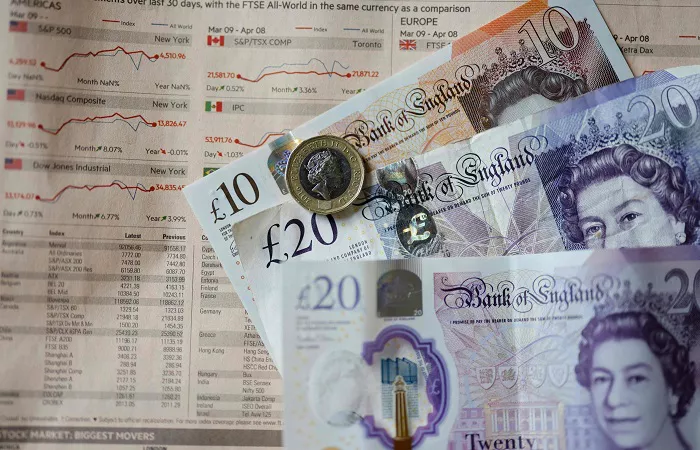On Wednesday, March 26, 2025, the United Kingdom’s economic landscape is bracing for a significant development. The Office for National Statistics (ONS) is set to release the February Consumer Price Index (CPI) data at 07:00 GMT. This eagerly awaited report is expected to show a softening of the UK’s inflation figures, which is likely to have far – reaching implications for the Bank of England (BoE) and the Pound Sterling (GBP).
Forecasted CPI Softening: A Closer Look
Economists and market watchers expect the annual UK headline CPI inflation to ease to 2.9% in February, down from 3% in January. The core CPI inflation, which excludes volatile elements like energy, food, alcohol, and tobacco prices, is projected to drop slightly to 3.6% year – over – year, compared to January’s 3.7%. Service inflation, a key component of the overall inflation picture, is also expected to see a dip. After a jump to 5% in January, it is forecasted to ease to 4.9% in February. Meanwhile, the British monthly CPI is anticipated to rise by 0.5%, reversing the previous month’s 0.1% decline.
TD Securities analysts, in their preview of the UK inflation data, noted that inflation is set to cool marginally. They predict the headline CPI to drop to 2.8%, with core and services inflation also coming in lower. However, they cautioned that while these figures represent a softening compared to January, the deceleration might still be too slow for the preferences of the Monetary Policy Committee (MPC) of the BoE.
Impact on the Pound Sterling and BoE Policy
The release of the CPI data could trigger significant volatility in the GBP. The market’s expectations regarding the BoE’s future interest rate cuts are likely to be swayed by the inflation figures. At its recent monetary policy meeting earlier this month, the BoE held interest rates at 4.5%. Amid the heightened uncertainty surrounding the UK and global economies, the BoE was cautious about rate cuts in the coming meetings.
The 8 – 1 vote split to maintain the current rate was a hawkish surprise, leading to an upward adjustment in UK rate expectations. The swaps market still anticipates 50 basis points of easing over the next 12 months, but odds of an additional 25 – basis – point cut have been priced out following the less dovish MPC vote.
If the headline and core inflation data exceed expectations, it could reaffirm the BoE’s prudent approach and reduce the likelihood of aggressive rate cuts this year. This scenario would likely revive the uptrend in the Pound Sterling, pushing the GBP/USD pair back towards the 1.3050 mark. Conversely, softer – than – expected inflation readings may ease concerns about the UK economy but could also revive expectations for more aggressive BoE rate cuts. This would extend the GBP/USD correction from its four – month highs.
Technical Outlook for GBP/USD
Dhwani Mehta, the Asian Session Lead Analyst at FXStreet, provides a technical perspective on the GBP/USD pair. Currently, the pair is trading above all major daily Simple Moving Averages (SMA). The 14 – day Relative Strength Index (RSI) momentum indicator on the daily chart is firmly above 50, and the 50 – day SMA and 100 – day SMA Bull Cross, confirmed on Monday, continues to support the pair.
However, for a sustained uptrend towards the November 2024 high of 1.3048, the pair needs to break and hold above the 1.3000 threshold. The next significant resistance level is at 1.3100. On the downside, the 21 – day SMA at 1.2863 serves as immediate support. If this level is breached, the critical 200 – day SMA at 1.2800 will come into play. A sustained break below 1.2800 could intensify selling pressure, potentially driving the pair towards the 1.2750 psychological level.
The Significance of CPI for Traders
The BoE’s mandate is to keep inflation, as measured by the headline CPI, around 2%. Therefore, the monthly CPI release holds great importance for traders. An increase in inflation may prompt the BoE to raise interest rates or reduce bond – buying, which would tighten the supply of pounds and be bullish for the GBP. Conversely, a slowdown in price rises could signal looser monetary policy, which is bearish for the currency.
Understanding the BoE’s various policies, such as interest rate adjustments, Quantitative Easing (QE), and Quantitative Tightening (QT), is crucial for traders. These policies have a direct impact on the value of the Pound Sterling and can provide valuable insights into market movements.
As the market awaits the release of the February CPI data, all eyes are on how it will shape the future of the UK’s monetary policy and the performance of the Pound Sterling in the global currency markets.
Related Topics:
EUR/GBP Holds Steady Near 0.8400 in the Wake of UK Employment Data
UK CFD Taxation: Capital Gains, Income Tax, and Special Rules
Euro Strengthens on Ukraine Ceasefire Optimism as Stocks Decline Amid Tariff Uncertainty


